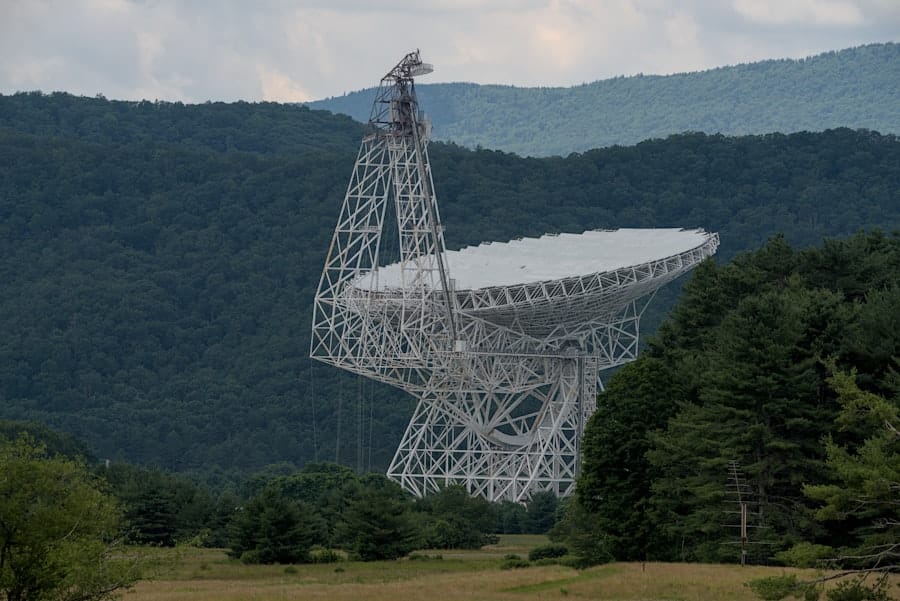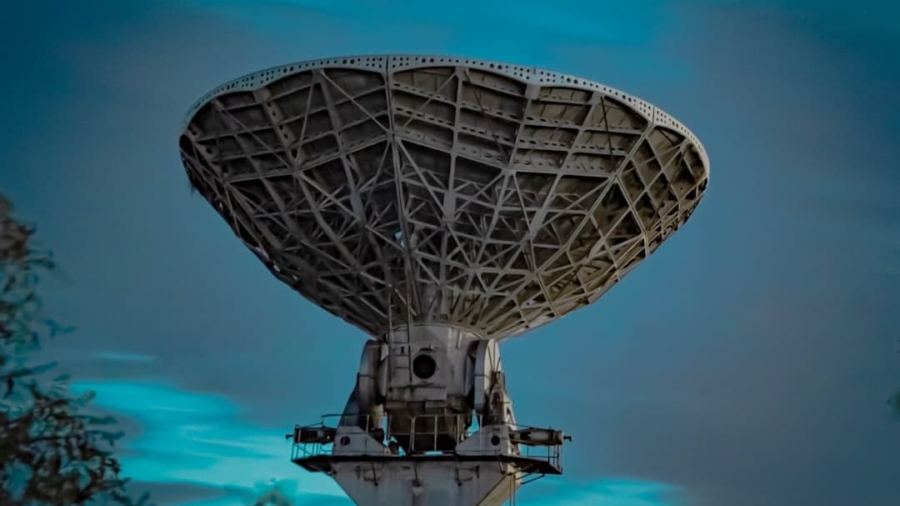Artificial Intelligence (AI) has emerged as a transformative force across various fields, including astronomy and astrophysics. Its capabilities extend far beyond mere automation; AI systems can analyze complex datasets, recognize patterns, and make predictions with remarkable accuracy. In the context of searching for extraterrestrial signals, AI’s potential is particularly significant.
The vastness of space and the sheer volume of data generated by telescopes and other observational instruments present challenges that traditional methods struggle to overcome. AI can sift through this data, identifying anomalies that may indicate the presence of extraterrestrial intelligence. The search for extraterrestrial signals is not just a scientific endeavor; it is a quest that touches on fundamental questions about our existence and place in the universe.
With the advent of AI, researchers are now equipped with tools that can enhance their ability to detect signals that might otherwise go unnoticed. By leveraging machine learning algorithms and advanced data processing techniques, scientists can explore the cosmos with unprecedented efficiency, potentially uncovering evidence of life beyond Earth.
Key Takeaways
- AI has the capability to detect extraterrestrial signals by analyzing vast amounts of data from space.
- SETI has a long history of searching for extraterrestrial intelligence and has recently incorporated AI into signal detection.
- Machine learning algorithms play a crucial role in analyzing the massive amounts of data collected from space in the search for extraterrestrial signals.
- AI has the potential to improve the accuracy and efficiency of signal detection, revolutionizing our understanding of the universe.
- Challenges and limitations exist in using AI for detecting extraterrestrial signals, including the potential for false positives and the need for ethical considerations.
The history of SETI (Search for Extraterrestrial Intelligence) and the use of AI in signal detection
The Search for Extraterrestrial Intelligence (SETI) has a rich history that dates back to the early 20th century. The modern SETI movement began in earnest in the 1960s with projects like Project Ozma, which utilized radio telescopes to listen for signals from nearby stars. Over the decades, SETI has evolved, incorporating advancements in technology and methodology.
The introduction of digital signal processing in the 1980s marked a significant turning point, allowing researchers to analyze radio waves more effectively. However, it was not until the 21st century that AI began to play a pivotal role in this field. The integration of AI into SETI efforts has been gradual but impactful.
Early applications involved using simple algorithms to filter out noise and identify potential signals of interest. As machine learning techniques advanced, researchers began employing more sophisticated models capable of recognizing complex patterns within vast datasets. For instance, the Breakthrough Listen Initiative, launched in 2015, has utilized AI to analyze data from some of the world’s most powerful radio telescopes.
This initiative exemplifies how AI can enhance traditional SETI methodologies, enabling scientists to focus their efforts on the most promising signals while minimizing false positives.
The role of machine learning algorithms in analyzing vast amounts of data from space

Machine learning algorithms are at the forefront of modern data analysis, particularly in fields that generate large volumes of information, such as astronomy. In the context of SETI, these algorithms are employed to process and analyze signals captured by radio telescopes. The sheer scale of data produced by these instruments is staggering; for example, the Square Kilometre Array (SKA), once fully operational, is expected to generate petabytes of data daily.
Traditional methods of analysis would be insufficient to handle such an influx of information, making machine learning an essential tool. One notable application of machine learning in SETI is the use of neural networks to classify signals. These networks can be trained on known signals—both terrestrial and extraterrestrial—to learn distinguishing features.
Once trained, they can then be applied to new data streams to identify potential signals that warrant further investigation. For instance, researchers have developed algorithms capable of detecting narrowband signals that are characteristic of artificial sources. By automating this process, scientists can significantly reduce the time required to analyze incoming data and increase the likelihood of identifying genuine extraterrestrial communications.
The potential impact of AI in improving the accuracy and efficiency of signal detection
The integration of AI into signal detection processes has profound implications for the accuracy and efficiency of SETI efforts. Traditional methods often rely on human operators to interpret data, which can be time-consuming and prone to error. In contrast, AI systems can process vast datasets rapidly and consistently, identifying patterns that may elude human observers.
Moreover, AI can help mitigate the issue of signal contamination from terrestrial sources. Many signals detected by radio telescopes are not from extraterrestrial origins but rather from human-made devices or natural phenomena.
Machine learning algorithms can be trained to recognize these contaminants, filtering them out and allowing researchers to focus on genuine anomalies. This refinement process is crucial for improving the signal-to-noise ratio in data analysis, ultimately leading to more accurate assessments of potential extraterrestrial communications.
Challenges and limitations in using AI for detecting extraterrestrial signals
Despite its promise, the application of AI in detecting extraterrestrial signals is not without challenges and limitations. One significant hurdle is the quality and diversity of training data used to develop machine learning models. For an algorithm to effectively identify extraterrestrial signals, it must be trained on a comprehensive dataset that includes both known artificial signals and natural cosmic phenomena.
However, obtaining such a dataset is inherently difficult due to the rarity of confirmed extraterrestrial communications. Additionally, there is a risk of overfitting when training machine learning models on limited datasets. Overfitting occurs when an algorithm becomes too specialized in recognizing specific patterns within the training data but fails to generalize effectively to new data.
This limitation could lead to false negatives—failing to detect genuine extraterrestrial signals—or false positives—misidentifying terrestrial noise as potential communications.
Ethical considerations and potential implications of AI in the search for extraterrestrial intelligence

The use of AI in the search for extraterrestrial intelligence raises several ethical considerations that warrant careful examination. One primary concern is the potential for misinterpretation or misrepresentation of detected signals. As AI systems become more autonomous in their analysis, there is a risk that findings could be presented without adequate context or scrutiny.
This could lead to sensationalism or unwarranted conclusions about the existence of extraterrestrial life. Furthermore, there are implications related to privacy and security when utilizing AI technologies for signal detection. The vast amounts of data collected by telescopes may inadvertently include information about terrestrial communications or other sensitive information.
Researchers must navigate these ethical waters carefully, ensuring that their methodologies respect privacy rights while still pursuing their scientific objectives.
Future developments and advancements in AI technology for detecting extraterrestrial signals
Looking ahead, advancements in AI technology hold great promise for enhancing our ability to detect extraterrestrial signals. One area ripe for development is the integration of deep learning techniques into signal analysis processes. Deep learning models have shown remarkable success in various domains, including image recognition and natural language processing.
By applying these techniques to signal detection, researchers could improve their ability to discern subtle patterns indicative of artificial sources. Additionally, as computational power continues to grow exponentially, researchers will have access to increasingly sophisticated algorithms capable of processing larger datasets more efficiently. Quantum computing represents a frontier that could revolutionize data analysis in SETI by enabling calculations that are currently infeasible with classical computers.
This leap in computational capability could allow for real-time analysis of incoming signals, significantly accelerating the pace at which potential extraterrestrial communications are identified and investigated.
Conclusion and the potential for AI to revolutionize our understanding of the universe
The intersection of artificial intelligence and the search for extraterrestrial intelligence represents a frontier filled with potential discoveries that could reshape our understanding of the universe. As AI technologies continue to evolve, they will undoubtedly enhance our capacity to detect and analyze signals from beyond our planet. The ability to process vast amounts of data quickly and accurately will empower researchers to explore previously uncharted territories in their quest for signs of life beyond Earth.
While challenges remain—ranging from technical limitations to ethical considerations—the ongoing integration of AI into SETI efforts signifies a paradigm shift in how we approach one of humanity’s most profound questions: Are we alone in the universe? As we stand on the brink of new discoveries facilitated by AI, we may soon find ourselves closer than ever to answering this age-old question, potentially unlocking secrets about our place in the cosmos that have eluded us for centuries.
In the quest to understand the universe and our place within it, the role of artificial intelligence in detecting extraterrestrial signals is becoming increasingly significant. As we explore this fascinating intersection of technology and space exploration, it’s essential to consider the broader implications of AI in various fields. For instance, AI’s impact is also evident in more terrestrial applications, such as enhancing educational tools and resources. An interesting read on this topic is the article on how to choose your child’s first smartphone, which delves into the considerations and technological advancements that can aid parents in making informed decisions. This highlights the versatility and transformative potential of AI, whether in the vastness of space or the intimacy of our daily lives.
FAQs
What is AI’s role in detecting extraterrestrial signals?
AI plays a crucial role in detecting extraterrestrial signals by analyzing vast amounts of data from telescopes and radio dishes to identify patterns or anomalies that could indicate potential signals from intelligent life beyond Earth.
How does AI help in processing the massive amount of data from space?
AI algorithms are capable of processing and analyzing massive amounts of data from space telescopes and radio dishes much faster and more efficiently than humans, allowing for the detection of potential extraterrestrial signals in real time.
What are the benefits of using AI in the search for extraterrestrial signals?
Using AI in the search for extraterrestrial signals allows for quicker and more accurate analysis of data, potentially leading to the discovery of signals that may have been missed using traditional methods. AI also has the ability to continuously learn and improve its detection capabilities over time.
Are there any challenges in using AI for detecting extraterrestrial signals?
One of the challenges in using AI for detecting extraterrestrial signals is the potential for false positives, where the AI may mistakenly identify non-extraterrestrial signals as potential signs of intelligent life. Additionally, ensuring the AI algorithms are properly trained and calibrated to avoid bias or errors is crucial.
How does AI contribute to the overall search for extraterrestrial intelligence?
AI contributes to the overall search for extraterrestrial intelligence by enhancing the capabilities of existing telescopes and radio dishes to detect potential signals from extraterrestrial civilizations. Its ability to process and analyze data at a rapid pace makes it a valuable tool in the ongoing search for signs of intelligent life beyond Earth.

